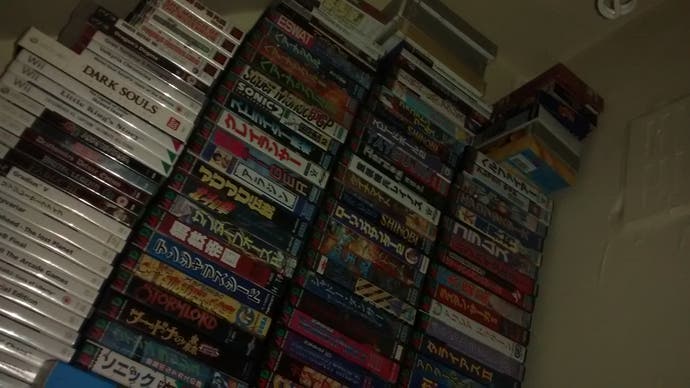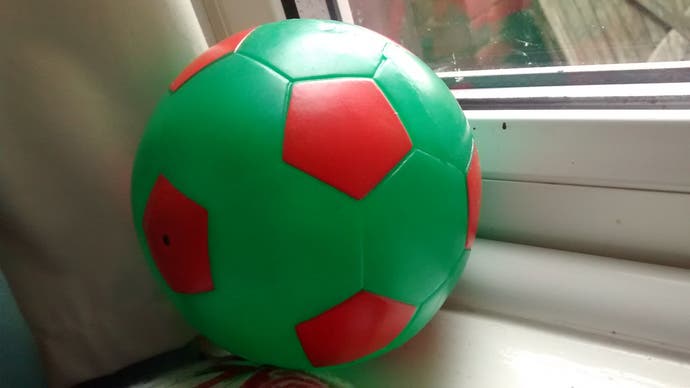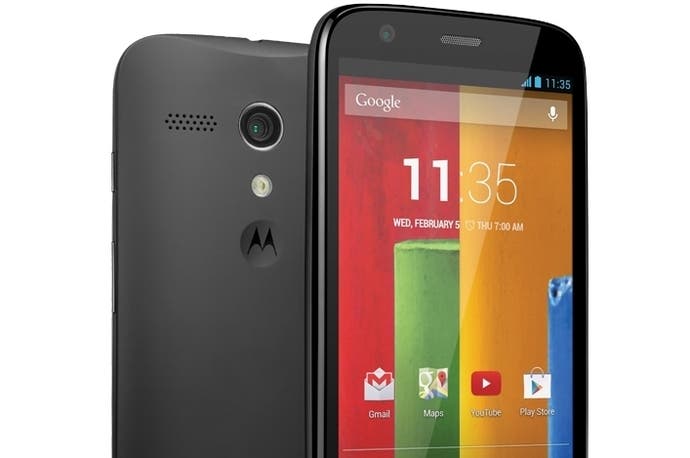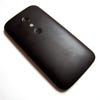Motorola Moto G review
A quad-core Android phone for £100 - what's the catch?
Apple doesn't do budget. That was the phrase uttered by many when rumours of a low-cost iPhone began to circulate a few months back; blurry images of a device with plastic casing drifted leaked online, prompting many to speculate that the Cupertino company was finally going to give Android a run for its money in the lower-priced end of the consumer spectrum. Alas, when the announcement finally came, such hopes were dashed. The iPhone 5C is indeed an iPhone in cheaper skin, but its price - around £100 less than the flagship 5S - could only be considered budget if you're accustomed to shopping in Harrods and drive a Ferrari.
As if to hammer home what a budget smartphone should really be like, Google-owned Motorola has released the Moto G, a quad-core handset with a 4.5-inch HD screen that can be picked up for less than £100. It's a raised middle finger to Apple's lower-end offering, and while there's nothing inside this device that will set the hearts of tech-lovers a-flutter, it could end up being one of the most significant pieces of Android hardware we've seen in years.
Motorola and Google have deliberately kept things simple with the Moto G. The phone's components are - according to its maker - as straightforward as possible to ensure quick and easy production. The resultant design is hardly what you'd call eye-catching, but there's a subtle beauty that mirrors the equally attractive Moto X, which launched in the US earlier in the year.
The back of the phone is black by default and boasts a soft-touch matte finish, but this cover can be snapped off (a process which is tougher than it looks and is sure to result in many broken fingernails) and replaced with a more colourful alternative. The presence of a rear cover may suggest a user-serviceable battery lies within, but the Moto G is actually something of a sealed unit - its 2070 mAh power cell is fused to the body of the phone, with the only other element of interest beneath the plastic shell being the Micro SIM card slot.
While the Moto G's IPS screen doesn't quite have the same visual punch as the Super AMOLED panels we're accustomed to seeing on Samsung's Android phones, it's still more than adequate and offers above-average colour replication, solid contrast and impressive brightness. The 720p HD resolution puts it on even terms with the Samsung Galaxy S3, while the pixel density of 326 ppi means images look pin-sharp.
The streamlined nature of the phone's production begins to tell at this point. Look as hard as you like beneath the rear cover, but there's no MicroSD card slot - a necessary sacrifice to reach that bargain basement price point - and inside the box you'll discover only a Micro USB cable. There are no wall charger and no headphones - these are deemed by Motorola to be non-crucial elements which would add to the cost of the product. It's not a massive issue, as they can easily be obtained elsewhere.
What you will find in the surprisingly slender packaging is a phone that simply doesn't make sense at such a low ticket price. The Moto G sports a Snapdragon 400 chipset comprised of a quad-core CPU running at 1.2GHz and a Adreno 305 graphics processor - all held together by 1GB of RAM. Placed alongside the likes of the Samsung Galaxy S4 and Nexus 5, this arrangement is predictably lacking - especially when it comes to 3D gaming - but when compared to other Android phones in the same price bracket, the Moto G's internals are rather more impressive.
"While benchmark accuracy can vary by up to ten per cent according to OEM trickery, results here strongly suggest that the Moto G offers better-than-S3 performance at a brilliant price."
| Moto G | Galaxy S3 | Nexus 4 | Nexus 5 | Galaxy S4 | HTC One | |
|---|---|---|---|---|---|---|
| AnTuTu | 16455 | 11950 | 16333 | 22870 | 23578 | 24374 |
| Geekbench 3 | 1084 | 1198 | 1646 | 2548 | 2190 | 1883 |
| GLBenchmark Egypt On-Screen/ Off-Screen | 27fps 16fps | 16fps 16fps | 39fps 31fps | 50fps 57fps | 41fps 41fps | 31fps 34fps |
| GLBenchmark T-Rex On-Screen/ Off-Screen | 11fps 6fps | 4fps 6fps | 19fps 12fps | 24fps 23fps | 15fps 15fps | 13fps 15fps |
| 3D Mark Ice Storm Unlimited | 4430 | 3401 | 10743 | 16514 | 10382 | 10602 |
It's not an entirely perfect package - the aforementioned absence of a MicroSD card slot creates obvious issues. The 8GB model currently being sold for less than £100 by some retailers actually offers the end user around 5GB of space to play with, because the OS itself takes up 3GB of the initial total. Google's cloud-based Drive service mitigates this problem somewhat by offering free storage, but you're obviously at the mercy of your net connection when it comes to accessing it. Relying on other cloud storage options - such as Google Music, Google Photos and Dropbox - you can grab even more space, but with the 16GB Moto G retailing for just a little more than its 8GB sibling, the wise choice is to opt for the larger capacity model.
The Moto G is equipped with Android 4.3, meaning it's as close to the pure "stock" experience as you're likely to get, short of purchasing a Nexus 4 or 5. While it's not quite the latest flavour of Android - that honour is reserved for 4.4, otherwise known as KitKat - an update is promised in the near future. When you consider how many flagship Android phones are several updates behind the curve - and then look at the impoverished wasteland that is the Android budget sector, with many sub-£100 phones stuck on Ice Cream Sandwich, or worse - the Moto G is remarkable.
Motorola has shown commendable restraint when it comes to pre-installed bloatware; there are very few apps loaded onto the phone initially, and the exclusive offerings that do exist are genuinely useful. Assist - which looks every inch like an app designed by Google - imitates the "Do Not Disturb" function seen in iOS. It reads your calendar for appointments and automatically silences your phone's ringer during those times. On top of that, it ensures your handset won't make any unwanted sounds during the night, as well.
"The camera app is much improved over the Nexus 4 and its successor, but the five-megapixel sensor is lacking, struggling in low-light conditions."




Exclusive apps aren't the only thing the Moto G has to offer. The camera app is also very different from the stock one that ships with the Nexus 4 and 5. To take a shot, you simply tap the display where you wish to focus, and to take a series of images you hold your finger down on the screen, releasing it when you're done. Compared to the capture process on the Nexus 5 - which involves tapping to focus, then tapping another part of the screen to shoot - it's a more streamlined experience. However, the five-megapixel sensor isn't as capable as we'd like, producing dull, often lifeless images and struggling in low-light conditions.
The Moto G also doesn't quite cut it as a gaming platform up against the latest and greatest - but acquits itself very well indeed compared to 2012's top-tier phones. In the here and now, while the quad-core CPU is brisk enough to make everyday usage reasonably smooth, the handset isn't as adept at pushing pixels in titles like Dead Trigger 2 and After Burner Climax. If you're looking to play less-demanding 2D games like Ridiculous Fishing and Super Hexagon, the lack of muscle is less noticeable. Thankfully, battery life is a little more positive - our review unit had no trouble is making it an entire day with moderate to heavy usage.
Motorola Moto G: the Digital Foundry verdict
"An excellent performer at almost everything it does, the Moto G competes fairly well with the flagship Android devices, let down just a touch by its GPU."
While the Moto G may not offer the same punch as cutting-edge Android phones such as the Nexus 5 and Galaxy S4, it costs significantly less than both of those devices. With a base price of £100, Motorola's handset is superb value for money and is sure to totally disrupt the budget mobile market - so long the preserve of underpowered phones with tiny screens running outdated operating systems. The Nexus 5 has already challenged the average consumer's preconceptions of what price they would pay for a cutting-edge handset, and the Moto G redefines the meaning of the low-cost option.
Perfect for younger users or those who desire a cheap smartphone but don't want to be treated like some kind of technological leper as a result, the Moto G is arguably one of the most important Android releases of the year, and marks an encouraging return to form for the company that created the famous RAZR. But as good as it is, you shouldn't go into a prospective Moto G purchase expecting state-of-the-art gaming power. The more ambitious titles out there simply push the Moto G beyond its limits, resulting in lacklustre performance, even though GPU benchmarks suggest a level of power that occupies a mid-point between the Galaxy S3 and the iPhone 5.
However, at this price-point, it's really difficult to criticise the sheer value you're getting here. Just about the only deal that came close to the kind of value we're seeing here was Google's end-of-line fire-sale prices on the Nexus 4, which saw the 8GB model selling for just £160 - pretty much the ultimate sweetspot in price vs. performance, but perhaps still a little pricey for the mainstream audience. That's where the Motorola's new offering comes in - as long as mobile gaming isn't your focus, the Moto G is arguably an even better bargain - and a brilliant, inexpensive way to sample what Android is all about.
Review unit kindly supplied by MobileFun









